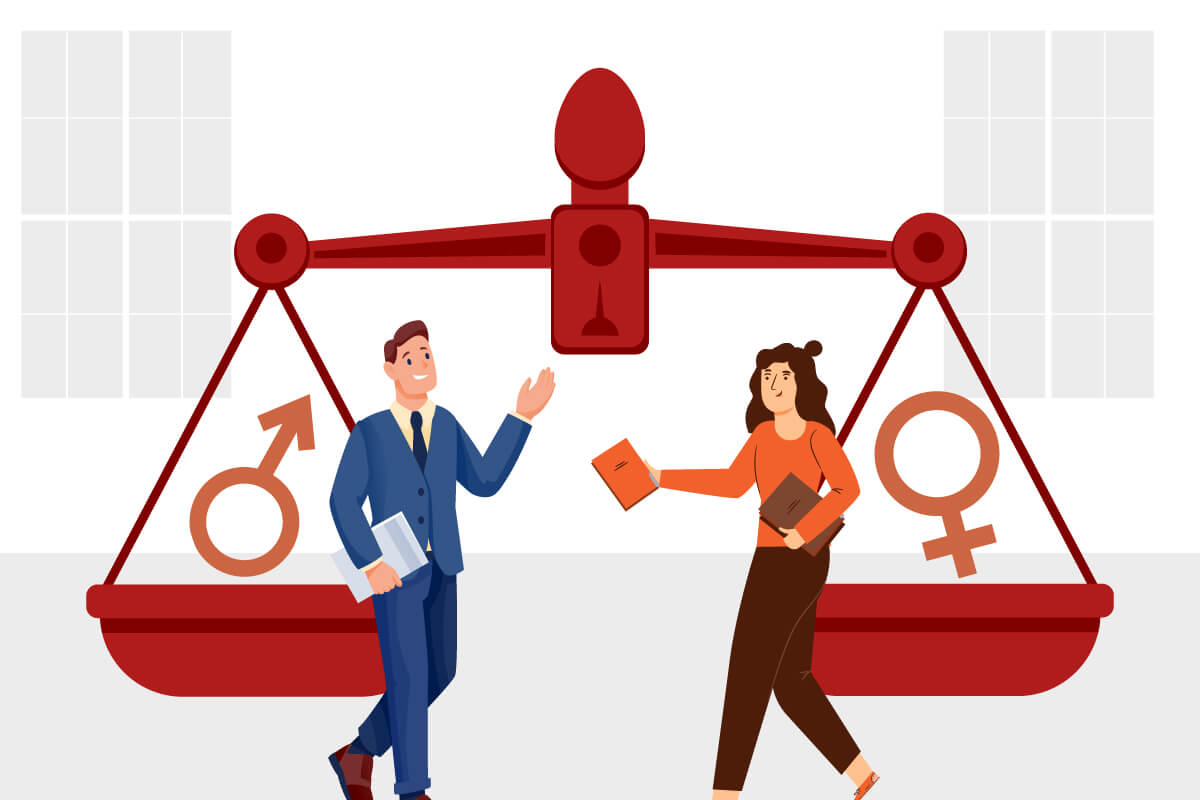In today’s digital world, technology isn’t just a tool. It’s a key enabler for economic success and social change. The digital revolution has opened up new possibilities for people to work, connect, and learn from anywhere. But as the digital divide grows, there’s still a huge gap between women and men when it comes to tech and digital abilities, especially for marginalised women. According to the World Bank data, only 25% of women are employed for nearly 73% of men in India. Also, another report says that less than 20% of the female population in our country works paid jobs.
At TRRAIN, we understand how important it is to involve women, especially those from the marginalised communities, so as to fulfil the dream of complete inclusivity and ending the gender gap in employment. We, through our TRRAINHer Ascent programme, enable women from ostracised communities to develop their skills and become employable, so that they contribute to their fullest potential. In this blog, we’ll talk about why it’s so important to close this gap, and how it can help create a more inclusive future for marginalised women.
The Gender Gap in Technology: A Global Issue
It’s no secret that there’s a huge gap between men and women when it comes to tech and digital skills, and it’s not just limited to one area. Women, especially those from disadvantaged backgrounds, have a lot of hard times when it comes to getting into tech school, training, and getting a decently paying job. The effects of this are huge:
- Gender Pay Gap: The pay gap between men and women in tech worsens the economic divide, making it harder for women to get top-notch jobs and career advancement.
- Underrepresentation: Women are way underrepresented in STEM fields, not only in India, but across the globe. This clearly means that these countries are missing out on a lot of different ideas and talent.
- Barriers to Entry: Women often don’t want to work in tech because of things like being discriminated against, not being able to get the education they need, and not being accepted by society.
- Digital Exclusion: Women who are often seen as marginalised often face digital exclusion, which can make it harder for them to get the services, info, and jobs they need.
Why Bridging the Gap Matters:
Closing the gender gap in tech and digital skills isn’t just about promoting equality in the society; it’s about promoting equity and overall economic growth. It’s a way to investing in a better, more inclusive society:
- Economic Empowerment: Equipping marginalised women with tech and digital skills empowers them to access higher-paying jobs, thereby reducing the gender pay gap and contributing to overall economic growth of a nation.
- Innovation: Having a diverse group of people on a team is key to bringing new ideas and ideas to the table. Women who are often overlooked in tech can bring a lot of different ideas and skills to the table, which can help a business succeed.
- Digital Inclusion: Teaching digital skills helps marginalised women get involved in the digital world, like getting access to essential services, medical info, and learning.
- Sustainable Development: Using tech to help underrepresented women is in line with the UN’s Sustainable Development Goals (SDGs), especially Goal 5 on Gender Equality and Goal 8 on Decent Work & Economic Growth.
How to Bridge the Gender Differences in Workplace:
Using tech and digital skills to help underrepresented women is something that needs to be done together by everyone involved. Here are a few ways to achieve the same:
- Accessible Education: The most effective way is to provide women with access to both formal as well as informal learning opportunities to learn about modern tech and the digital world. This could include collaborating with schools, non-profit organisations, and online learning platforms.
- Mentorship and Role Models: Support mentorship programs that link up underrepresented women with tech-savvy, successful women. Having role models to look up to can help motivate and motivate others to get into tech.
- Community Engagement: Community-based programs are great for helping marginalised women get up to speed on tech and giving them the tools and support they need.
- Government Initiatives: Governments have an important part to play in closing the gender gap by setting up policies that encourage women and men to work together in tech and the digital space.
- Private Sector Engagement: Make sure companies are on board with diversity and inclusion by providing training, offering flexible work plans, and creating a supportive atmosphere for women who are often seen as marginalised.
TRRAIN – Towards a More Inclusive Future
Closing the tech & digital skills gap for marginalised women isn’t just about ending the inequality in employment, it’s about investing in a better future. There is huge potential for economic development, innovation and digital inclusion, which can be fulfilled only if we include everyone in the effort. At TRRAIN, we are giving marginalised women the tools and skills they need to succeed in the digital world, and by doing that we are not only inching towards closing the gender gap, but we are also taking a step closer to making sure everyone has the same chance to succeed, no matter who they are or where they come from.





